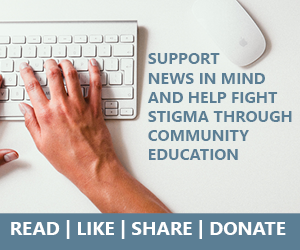Mental health experts are calling for greater monitoring of the use of restraints, both physical and chemical, in mental healthcare.
They have raised concerns that the use of drugs to restrain patients could be on the rise in mental health facilities due to a lack of monitoring.
There are three types of restraint in mental health care; physical restraint, mechanical restraint and chemical restraint.
The United Nations has called for all of them to be banned.
In 2013, UN special rapporteur on torture Juan E Méndez called for “an absolute ban on all coercive and non-consensual measures, including restraint and solitary confinement of people with psychological or intellectual disabilities … in all places of deprivation of liberty, including in psychiatric and social care institutions.”
In the past few years, state and territory governments have committed to phasing out the use of controversial restraint techniques in mental healthcare, focusing on seclusion.
In 2005, Australia’s first national statement about safety improvement in mental health was endorsed, the National Safety Priorities in Mental Health: a national plan for reducing harm.
It stated that the “plan identified four priority areas for national action including ‘reducing use of, and where possible eliminating, restraint and seclusion'”.
It said that “seclusion may be used across the range of mental health services, however, is most commonly used in the acute specialised mental health hospital service setting, subsequently, this service setting has been the focus of quality improvement initiatives.”
But mental health experts have said that because the focus is aimed at seclusion, other restraints will be used more instead.
Restraint techniques ‘not well monitored’
After a suicide attempt, Indigo Daya was sedated and locked in a seclusion room in a psychiatric ward.
“It was really like recreating my worst horrors and calling it treatment,” she said.
“Obviously it was about the least helpful thing that could have happened.”
Ms Daya’s treatments went on for years, the techniques used involved being kept locked up and being heavily medicated, a tactic known as chemical restraint.
“That meant that I could hardly have much of a life at all,” she said.
“And I still, on the inside, was really distressed, I just couldn’t express it clearly.”
Physical and chemical restraint are not monitored closely and Ms Daya said that made restraint more insidious.
“Because it’s not measured there are no real protections against it, so it’s something that continues for years and years and years,” she said.
“Whereas at least with seclusion it is obvious what is happening and there are protections in place to monitor it.”
Seclusion, or locking patients alone in a room, is another practice considered by mental health experts as harmful, who have called for it to be stopped.
Seclusion is defined in mental health legislation as the deliberate confinement of a person, alone, in a room or area that they cannot freely exit.
But unlike the use of restraining techniques, it is now closely scrutinised.
Data from the Australian Institute of Health and Welfare showed the use of seclusion had fallen by an average of 10 per cent, per year, over the last five years, though it has been on the rise in Queensland and the Northern Territory recently.
‘Time to stop restraining patients,’ advocate
Frank Quinlan, CEO of Mental Health Australia, said he was worried the use of restraint could be on the rise while unmonitored.
“So we’d want to watch the figures for both of those forms of restraint, just so we can be sure we’re not seeing a shift from one form of seclusion to a new form of chemical restraint.”
Mental health law expert professor Bernadette McSherry has also backed the call for monitoring restraining techniques.
“We know so little about this, we really need some comprehensive uniform measurement across Australia to get a full picture of how often restrictive interventions are used.”
Ms Daya is now a mental health consumer advocate, and she said it was time to stop restraining patients.
“If I was really harsh I would say that it’s a form of lazy and harmful practice that achieves a similar effect, so if you can’t lock someone in a small room you can medicate them to the point that they can hardly move and have the same kind of effect.”
Ms Daya said she believed it was possible to entirely eliminate the use of physical restraint.
“I’m sure there’s people who would disagree with me, but I believe there are services around the world who have already done it and if they can I think we can.”
A spokesman for the Australian Institute of Health and Welfare said the institute was aiming to get a national agreement on definitions and record keeping, so restraint in mental healthcare could be closely monitored in the future.
This article first appeared on ‘ABC News’ on 5 January 2015.























